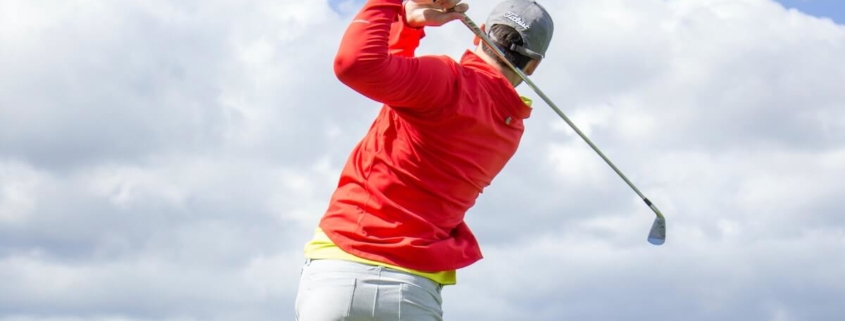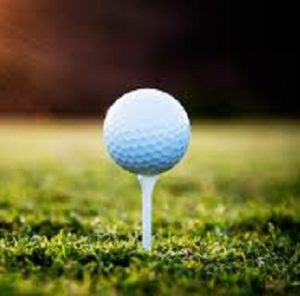Are you trying to fit in as much time on the course as possible this season? Who could blame you? Golf is one activity that offers a healthy combination of mental stimulation, physical fitness, fresh air, and solace. For these reasons, it’s hard to keep avid golfers off the course during stretches of favourable weather. However, if and when pain or discomfort starts interfering with your swing, it’s time to do something about it before it gets worse. Here’s what you need to know about Golfer’s Elbow and Golfer’s Elbow treatment in Victoria, BC.
What Is Golfer’s Elbow and Why Does It Hurt So Much?
Like tennis elbow, which occurs outside the elbow, Golfer’s Elbow (Medial Epicondylitis) is an overuse injury. Technically a form of tendinitis, Golfer’s Elbow is caused by repetitive movements that strain and inflict small tears in the muscles and tendons of your forearm, resulting in pain and inflammation that radiates from the inside of your elbow.
Pain from Golfer’s Elbow can come on suddenly, gradually, or develop and worsen with repeated use. It’s not uncommon for golf enthusiasts to push through the initial signs and symptoms of Golfer’s Elbow until the resulting pain and stiffness interfere with their swing. Golfer’s Elbow that is caught early and treated with adequate rest and ice can sometimes resolve on its own. Still, if pain, stiffness, or weakness persist, you’re better off seeing a health practitioner for proper diagnosis and treatment.
Signs & Symptoms of Golfer’s Elbow
Here are the most common signs & symptoms of Golfer’s Elbow:
- Pain and tenderness at the inner side of your elbow
- Elbow pain that worsens with specific movements–especially during your golf swing.
- Stiffness of elbow and forearm
- Difficulty, weakness, or pain when clenching your grip to make a fist
- Numbness, burning, or tingling pain that may extend into the upper arm, forearm, and fingers
- Pain and tenderness that worsens at night or upon waking
- Pain when you make a fist or flex your wrist towards your forearm
Common Causes & Aggravating Factors
Considered an overuse injury, Golfer’s Elbow isn’t exclusive to golfers. Instead, it’s a common ailment amongst athletes, workers, and enthusiasts that partake in activities or occupations that place repetitive load or strain on the forearms and elbow, including:
- Tennis and other racquet sports
- Baseball, football, and other sports that involve pitching/throwing
- Rowing
- Occupations that involve the frequent and repeated use of tools such as hammers, wrenches, cleavers, paintbrushes, and paint rollers
- Computer work
- Weightlifting movements that cause curling of wrists or which place strain and load on forearms, wrists, and elbows
Things You Can Do to Help Prevent It From Developing
- Taking time to warm up and stretch your muscles before activity
- Proper use of a compression sleeve to help support your wrists and elbows as needed
- Paying attention to proper form on the course and during workouts
- Performing exercises that target and strengthen your wrists and forearm muscles
- Being correctly fitted with the right sports equipment for your size and stature
- Staying on top of hydration during activity and getting adequate rest
- Being mindful of signals your body sends you indicating that rest and care are needed (pain, swelling, discomfort, decreased range of motion, numbness, etc.)
- Establishing good workstation posture and ergonomics
When to Seek Treatment for Golfer’s Elbow Pain
Mild cases of Golfer’s elbow often resolve with several days of rest and intermittent icing; however, if the pain persists or worsens, it’s best to seek treatment. Left untreated, Golfer’s Elbow can progress to more serious injury, resulting in limited movement, permanent disability, or conditions requiring surgery to help resolve. For this reason, prevention and prompt treatment are vital. When rest and ice fail to resolve pain, or when Golfer’s Elbow continues to flare up and interfere with your activities, it’s time to get help. The good news is, with proper help and treatment, Golfer’s Elbow can be resolved and prevented.
At Diversified Health Clinic, effective treatment of activity-induced aches and pains involves a tailored approach, starting with a thorough assessment of your condition to identify the root cause of your pain and determine the best course of treatment that will expedite healing.
Take the Next Step
Don’t let Golfer’s Elbow keep you off the course for too long. Instead, take the first step on your road to recovery by booking an appointment with one of our practitioners today. Call (250) 382-0018 or book an appointment online. We offer direct billing and weekday and weekend appointments. Please view our hours of operation and location details here.
Related
Lower Back Pain From Golf? Here’s How to Fix It
Joint Pain? Why It’s Important to Identify Bursitis Symptoms
Private Victoria Rehab Gym Helps You Recover From Sports Injuries



